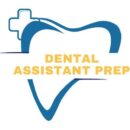Explore the latest on the Dental assistant job outlook to stay ahead in the profession.
- Growth Trajectory: With an 11.2% increase expected in California, dental assistants are in demand.
- Technological Impact: Advancements in dental tech could influence job opportunities and required skills.
- Education Advantage: Certifications and education can significantly boost your career prospects.
Stay informed on the Dental assistant job outlook for strategic career moves.
Current Trends in Dental Assistant Employment
Overview of Job Growth
The dental industry remains a robust field with a strong job outlook for dental assistants. Recent data suggests that dental assistant positions are set to grow, with the Bureau of Labor Statistics predicting a 7% growth from 2019 to 2029, which is faster than the average across all occupations.Dental Assistant Job Outlook This positive trend is driven by several factors including demographic changes, an increased emphasis on preventive dental care, and the integral role dental assistants play in healthcare.
Demographic Influences
- Aging Population: The baby boomer generation is entering an age where dental care is more critical than ever. With age, there come more complexities in dental health requiring frequent visits and procedures,Dental Assistant Job Outlook thereby escalating the demand for dental assistants to support these services.
- Population Growth: States like California with large populations are witnessing a particularly strong demand. Projections show that the Golden State could see a growth of up to 13.5% in this profession between 2019 and 2029.
Impact of Dental Care Awareness
As public knowledge about the importance of oral health increases, so does the utilization of dental services. Education campaigns and better access to information have led to a broader understanding that oral health is a pivotal component of overall health, thus driving more people to seek out dental services. Consequently, the demand for dental assistants to support dentists and hygienists becomes more acute.
The Role of the Dental Assistant
The dental assistant’s responsibilities—from patient care coordination, managing dental records, to assisting during procedures—are critical for the smooth operation of dental practices.Dental Assistant Job Outlook Their versatility and direct impact on patient experience make them a valuable asset, ensuring their services continue to be in high demand.
Summary and Projections
In summary, the prospects for dental assistants are healthy, with ample opportunities ahead. Those considering a career in this field can be optimistic about their chances of finding employment, with burgeoning opportunities linked to health trends and demographic shifts.
Geographical Variations in Job Prospects
Regional Opportunities
The job outlook for dental assistants can vary significantly by region. Urban areas with high population densities typically exhibit greater demand for dental services, subsequently resulting in more job openings for dental assistants.
States with High Demand
Some states, like California, are hotspots due to their massive population and advanced healthcare systems. However, states with growing populations in the South and Southwest such as Texas and Arizona are also seeing an uptick in demand for dental care professionals.
Rural Versus Urban
Dental assistants in rural areas may face different employment landscapes. While there might be fewer job opportunities in these areas compared to cities, rural practices often serve a larger geographic area and might offer more robust job stability or diverse responsibilities to a committed dental assistant.
The Role of Technological Advancements
Digital Dentistry’s Impact
Technology has always played a pivotal role in shaping job markets, and dental assisting is no exception. Innovations in digital dentistry such as 3D imaging, electronic record keeping, and advanced diagnostic tools are changing how dental care is delivered.
Skill Set Evolution
Due to these technological advancements, dental assistants are finding a need to continually adapt and expand their skills. This includes proficiency in software for digital record keeping, understanding new diagnostic tools, and staying abreast of the latest trends in dental technology.
Pros and Cons
While technology can streamline many processes within a dental office, there is concern that advancements could reduce the need for some traditional tasks performed by dental assistants. However, many experts view this evolution as an opportunity for dental assistants to enhance their roles, becoming more specialized and integral to new procedures.
Educational Pathways for Aspiring Dental Assistants
Educational Requirements
The journey to becoming a dental assistant varies by state, but there are common pathways that individuals can take to enter this promising field. Combining formal education with practical experience is the most conventional route.
Formal Education Programs
Many aspiring dental assistants opt for a formalized education program. These programs typically span 9 to 11 months and cover a range of topics from basic biology to hands-on clinical practice. In states like California, completing a Board-approved RDA program is one path forward.
Certification
Certification is an essential step for many dental assistants. The Certified Dental Assistant (CDA) examination is widely recognized and includes various components such as General Chairside Assisting, Radiation Health and Safety, and Infection Control. Holding this certification can significantly improve job opportunities and career prospects.
Staying Current with CPR Certification
CPR certification is a must for dental assistants, often required within the first 180 days of employment. This certification is not only a regulatory requirement but also an essential skill for ensuring patient safety and preparedness in emergency situations.
Continuing Education
Continuous learning plays a critical role in the career of a dental assistant. Whether through seminars, workshops, or advanced courses, staying informed of the latest practices and technologies in dental care will bolster one’s expertise and job security in this evolving field.
Essential Skills for the Modern Dental Assistant
As technology and the healthcare landscape evolve, so do the skills required to excel as a dental assistant. The most successful dental assistants merge foundational knowledge with a suite of contemporary capabilities that keep them at the forefront of patient care and office efficiency.
Clinical Competence
Understanding the clinical environment and being adept at dental procedures are core to a dental assistant’s role. This includes:
- Patient Preparation: Preparing patients for treatments or checks.
- Sterilization: Maintaining the cleanliness and sterilization of instruments and workspaces.
- Assistance: Providing direct assistance during dental procedures.
Administrative Proficiency
A dental assistant’s responsibilities aren’t limited to clinical settings. Administrative tasks are crucial:
- Appointment Management: Scheduling appointments and managing patient flow.
- Record Keeping: Updating patient records and handling office correspondence.
- Insurance Processing: Understanding dental insurance policies to improve patient experience with billing and claims.
Interpersonal and Communication Skills
Interactivity with patients and team members is constant. Key interpersonal skills include:
- Empathy: Being empathetic towards patients’ concerns and comfort levels.
- Effective Communication: Clearly explaining procedures to patients and relaying important information to colleagues.
- Teamwork: Collaborating with the dental practice team to provide top-notch patient care.
Technological Savviness
With the expansion of digital dentistry, assistants need to be tech-savvy:
- Digital Records: Managing electronic health records requires proficiency in various software systems.
- Equipment Handling: Operating sophisticated dental technology and equipment.
Adaptability and Continuous Learning
The willingness to learn and adapt is non-negotiable to stay current:
- Adaptability: Embracing changes in office procedures or technologies.
- Ongoing Education: Pursuing continuing education opportunities to enhance skill sets.
The Economic Factors Influencing Dental Assisting Jobs
The health of the economy plays a significant role in employment opportunities in all sectors, including dental assisting. Factors such as insurance policies, health care reforms, and the general economic climate can influence the demand for dental services and subsequently affect the job market for dental assistants.
Healthcare Policy Reforms
Legislative changes impacting healthcare provision can lead to changes in demand:
- Insurance Coverage: Expansion or restriction of dental insurance coverage affects the number of patients seeking dental care.
- Public Health Initiatives: Programs targeting oral health can increase the need for dental assistants.
Economic Cycles and Employment
Fluctuations in the economy dictate employment trends:
- Recession: Economic downturns might lead to a reduced demand for elective dental services.
- Boom: Economic growth generally leads to higher employment rates in health services, including dental assisting.
Dental Practice Economics
The financial health of dental practices is directly linked to dental assistant positions:
- Operational Efficiency: Practices may rely more on assistants to improve operational efficiency.
- Cost Management: A focus on cost management might influence the scope of work for dental assistants.
Opportunities for Career Advancement
The career trajectory for dental assistants doesn’t have to plateau after entry into the profession. There are several paths to pursue for those looking to ascend professionally.
Specializations
Dental assistants can specialize in areas like pedodontics or orthodontics, which can offer a higher level of responsibility and possible pay increase.
Further Education
Pursuing further education in dental hygiene or even dentistry itself is a viable path for career progression.
Leadership Roles
As experience builds, dental assistants can move into supervisory or management roles within their practices.
Teaching and Training
Experienced dental assistants can transition into roles that involve teaching or training new assistants, sharing their comprehensive knowledge and skills.
Overcoming Challenges in the Dental Assistant Job Market
Despite an optimistic job outlook, dental assistants may face a variety of challenges in their career. Recognizing and preparing for these hurdles can help ensure job stability and satisfaction.
Competition in the Field
Increased interest in dental assisting can lead to a more competitive job market. To stand out:
- Gain certifications and accreditations that are respected in the field.
- Seek out specialties that are in high demand in your area.
Adapting to New Technologies
As dental practices adopt new technologies, assistants will need to stay ahead of the curve. Continuous learning and adaptability are key.
Navigating Changing Regulations
Staying informed about changes in healthcare policies and regulations will ensure that assistants remain compliant and indispensable within their practices.
Maintaining Work-Life Balance
- Time Management: Excel in managing your time effectively to maintain a healthy balance.
- Self-Care: Prioritize your well-being to prevent burnout and ensure long-term career success.
Bold action and a commitment to growth can propel a dental assistant’s career, keeping it vibrant and rewarding despite the industry’s challenges. By embracing education, honing essential skills, and adapting to economic and technological changes, dental assistants can secure their position in the ever-evolving landscape of healthcare.

